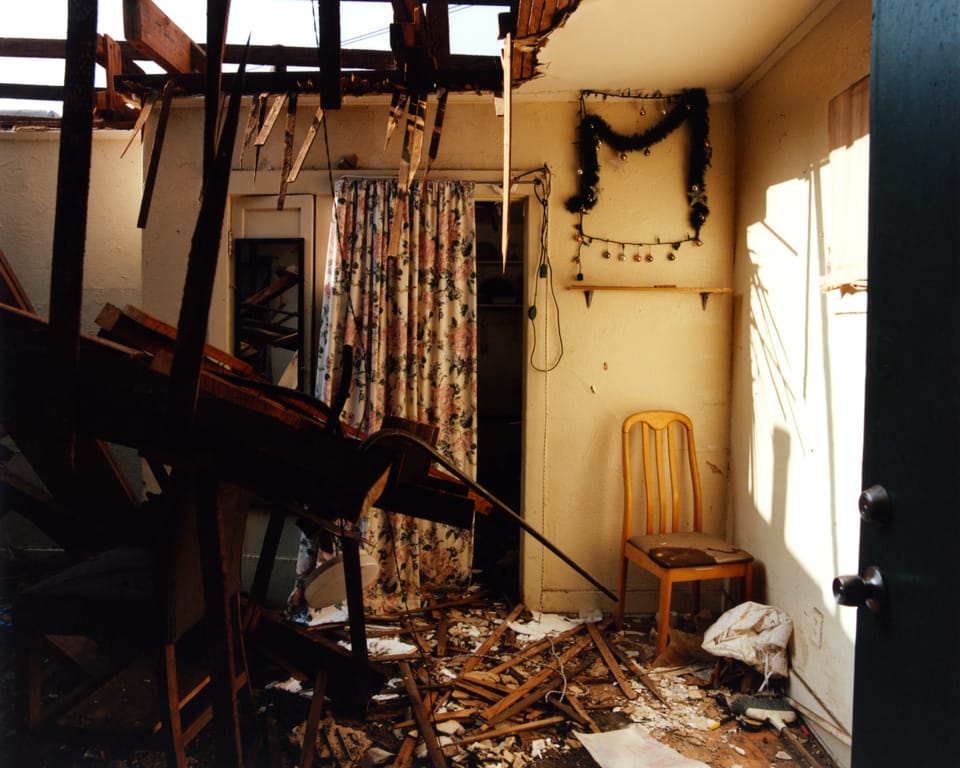A Climate Solution Under Attack

This edition is available to all (except the paid exclusives). Support my work and upgrade to paid here for as little as $5 a month.
Possibilities is both fact-based and passionate—I love the way you balance the head and the heart, how you share your deep knowledge of the polycrisis along with your intuitive wisdom and caring. I also love your focus on the many ways the climate emergency affects marginalized groups. I learn so much from the newsletter!
LISTENING: to chappell on repeat after seeing her live sunday
FEELING: exhausted, and it's only wednesday!
SEEING: the skies turn gray
This week, New York was abuzz with advocates, policy nerds, funders, and world leaders. It's Climate Week, baby! At the U.N. headquarters, heads of government met to announce their new nationally determined contributions—the technical term for their carbon pollution reduction promises in the Paris Agreement to address the colossal climate crisis we collectively face.
On Wednesday, 120 countries and the European Union came forth with new commitments, but will it be enough?
Ani Dasgupta, CEO and president of environmental research organization World Resources Institute, said in an emailed press statement: "We cannot sugarcoat it. These new climate plans do not put us anywhere near on track for a safe future. The lack of ambition so far from most major emitters, barring a few, underscores the immense political challenge countries face in transforming their entire economy."
For those players who actually want to build a carbon-free future, they'll have to consider their labor gap. Installing solar panels and improving public transit requires workers in several sectors—from waste management to engineering. A new report out Wednesday underscores one solution: migrants.
The paper, published by the global mayor network called C40 and the solutions-oriented Climate Migration Council, calls on cities to invest in immigration policies that welcome newcomers to help spur green development. I'm not just talking about energy, either. There's work in building water infrastructure and trains, too.
The result could be $280 billion in economic growth by 2040 if the authors' modeling data are right.
The report examined 25 cities like Boston in the U.S. and Cape Town in South Africa. The authors mention the importance of training local workers, but their data indicate that cities would need more labor to cut carbon pollution to the levels countries have pledged. The paper points to two examples of cities already training their migrant and refugee populations to build this workforce: Nairobi, Kenya, and São Paulo, Brazil.
Climate displacement is already here—and it won't stop anytime soon. The paper's argument is compelling. After all, who are the guys you see at construction job sites? Am I to believe that the green boom will look any different whenever it comes?
I'm not sure these findings will sway the people who need swaying, especially as xenophobia is on the rise. However, they remind me that countries have always relied on immigrants to build their power and grandeur. Hell, Americans even rely on immigrants to fight our wildfires. Remember the men who were detained by Immigration and Customs Enforcement in Washington? ICE finally released one man Tuesday: 23-year-old Rigoberto Hernandez Hernandez.
"I am glad that I am home, and I am excited to see my family,” said Hernandez in a press release.
He wrote in a court declaration: "For me, firefighting is much more than a job. It is a calling to me. I consider it my duty. It has given me clarity in how I think and how I want to act and be in the world. I want to be able to continue to protect the land, the wildlife, and the people of this country."
As his legal team writes in the press release, Hernandez's job was to cut down trees and clear vegetation. Y'all know how wildfires work by now, right? Leaves, dead trees, and dry brush serve as fuel for wildland fires. They're what transform small sparks into unstoppable death balls. In his position, Hernandez stewarded the land to prevent those worst-case scenarios. This year was his third season on the job.
Immigrants are everywhere. Well, except at New York Climate Week discussions. Or at least the ones I've seen. I worry that an annual event in a city of immigrants that fails to center their perspectives is exactly what's wrong with the mainstream climate movement.
This community needs to be at the table. Immigrants have a voice. And cities should listen. Including New York, whose own mayor has been ignoring advocates in Sunset Park who worry Eric Adams' plans for climate jobs will gentrify Brooklyn's oldest Latine neighborhood and leave people displaced. They have their own community-led plan they want to see the city implement, instead. (Zaddy Zohran, I hope you're taking notes to show this guy how it's done.)
Immigrants of all backgrounds have the answers. They also have the energy to push this green revolution forward. It's past time to listen. 🌀
The newsletter ends here for free subscribers. Why not upgrade?

